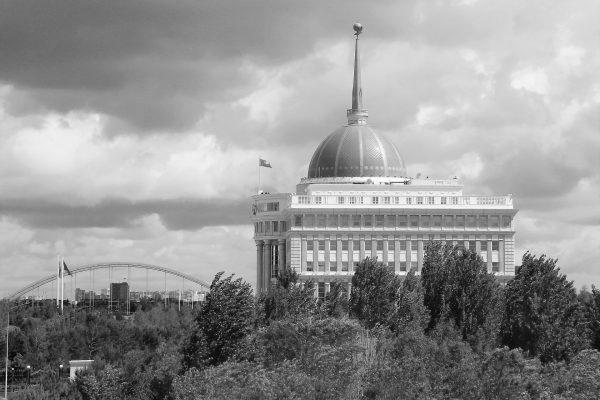What’s in Kazakhstan’s Constitutional Referendum? – The Diplomat
Warning: Undefined variable $post_id in /home/webpages/lima-city/booktips/wordpress_de-2022-03-17-33f52d/wp-content/themes/fast-press/single.php on line 26

2022-05-24 16:24:19
#Whats #Kazakhstans #Constitutional #Referendum #Diplomat
Crossroads Asia | Politics | Central Asia
On June 5, Kazakhs will vote on a package deal of reforms meant to rework the nation from a super-presidential system to a “presidential system with a robust parliament.”
AdvertisementSix months after Kazakhstan’s President Kassym-Jomart Tokayev called protesters terrorists and requested help from the Russian-backed Collective Security Treaty Organization to quell mass unrest, citizens will take part in a referendum on constitutional reforms.
The vote will take place on June 5, just one month after the proposed reforms have been launched. The reform package deal addresses 33 separate articles – about one third of the entire constitutional articles – and was developed by a working group that Tokayev established in March. The reforms are mentioned to transform Kazakhstan from a super-presidential system to a “presidential system with a strong parliament,” per Tokayev’s state of the union handle on March 16.
A super-presidential system is one the place parliaments and courts are only nominally impartial, and the president and their administration have almost unlimited management over political decision-making. Kazakhstan’s first step to a super-presidential system was the adoption of a brand new constitution in 1995 that was pushed by Nursultan Nazarbayev after dissolving an uncooperative parliament. Nazarbayev additional consolidated his personal powers with constitutional amendments in 1998, 2007, and 2011.
Nazarbayev began to loosen the president’s control with constitutional amendments in 2017 that barely redistributed presidential powers to different branches of government and opened the trail for the election of native representatives, at least on the village stage. Nevertheless, Nazarbayev slyly maintained his private management over Kazakhstan’s politics by together with provisions that protected him as “elbasy,” or leader of the nation.
Diplomat BriefWeekly NewsletterNGet briefed on the story of the week, and growing tales to observe across the Asia-Pacific.
Get the PublicationThe proposed constitutional reforms strip the constitution of mentions of elbasy and the First President of the Republic, which some see as a continued sign of the Nazarbayev household’s fall from grace.
In addition to sidelining Nazarbayev, several proposed provisions would slightly limit the ability of the president. The president shouldn't be a member of a political celebration, which member of the working group Sara Idrysheva referred to as “the bravest step of our esteemed president.” In anticipation of this modification, Tokayev stepped down as chairman of the Amanat occasion – a rebranded version of Nazarbayev’s ruling Nur Otan party – on April 26. Moreover, the president can no longer override the acts of akims of oblasts, main cities, or the capital and close members of the family of the president can't maintain political posts.
A number of proposed measures give parliament more energy vis-a-vis the president. Kazakhstan’s parliament will stay bicameral, however the distribution of power between the higher and lower houses will shift somewhat. The Senate will no longer have the power to make new laws, and as an alternative will just approve or reject legal guidelines handed by the Mazhilis. Furthermore, the process for choosing deputies to each homes will change.
First, the Mazhilis might be diminished to 98 deputies, following the abolition of nine seats appointed by the Meeting of the Peoples of Kazakhstan. These seats will likely be transferred to the Senate, and the Meeting of the Peoples will now only get to appoint 5 deputies. The variety of deputies appointed by the president shall be lowered from 15 to 10.
CommercialSecond, Mazhilis deputies will likely be elected according to a combined system. Seventy p.c of Mazhilis deputies will be chosen by proportional elections, and 30 p.c shall be straight elected.
The one proposed modifications to the judicial system relate to the reestablishment of the Constitutional Court docket. Kazakhstan had a Constitutional Court docket till the adoption of the 1995 structure, which instituted a weaker constitutional council. The president nonetheless maintains a strong influence over the Constitutional Court’s make-up, nevertheless, with the flexibility to pick the court’s chairman and four of the judges; parliament chooses the opposite three.
Tokayev has emphasised the significance of native governance, marked by the first-ever direct election of village akims and plans to introduce three new oblasts that will deliver authorities bodies closer to the populations they signify. Maybe the most disappointing side of proposed reforms is the shortage of significant motion on native representation for residents of Kazakhstan’s largest cities. If the referendum passes, Kazakhstanis will get to vote for akims of oblasts, major cities, and the capital – however, the candidates can have been chosen by the president. The best to elect native leadership has been one of the vital constant calls for from Almaty residents, and this attempt to create alternative is in the end beauty.
The proposed reforms are essential steps towards actual representative government in Kazakhstan; however, they do not necessarily constitute ahead movement. Most of the amendments are merely reinstating mechanisms of checks on presidential power that beforehand existed, rather than materially changing the connection between state and society, as Tokayev claims.
Quelle: thediplomat.com